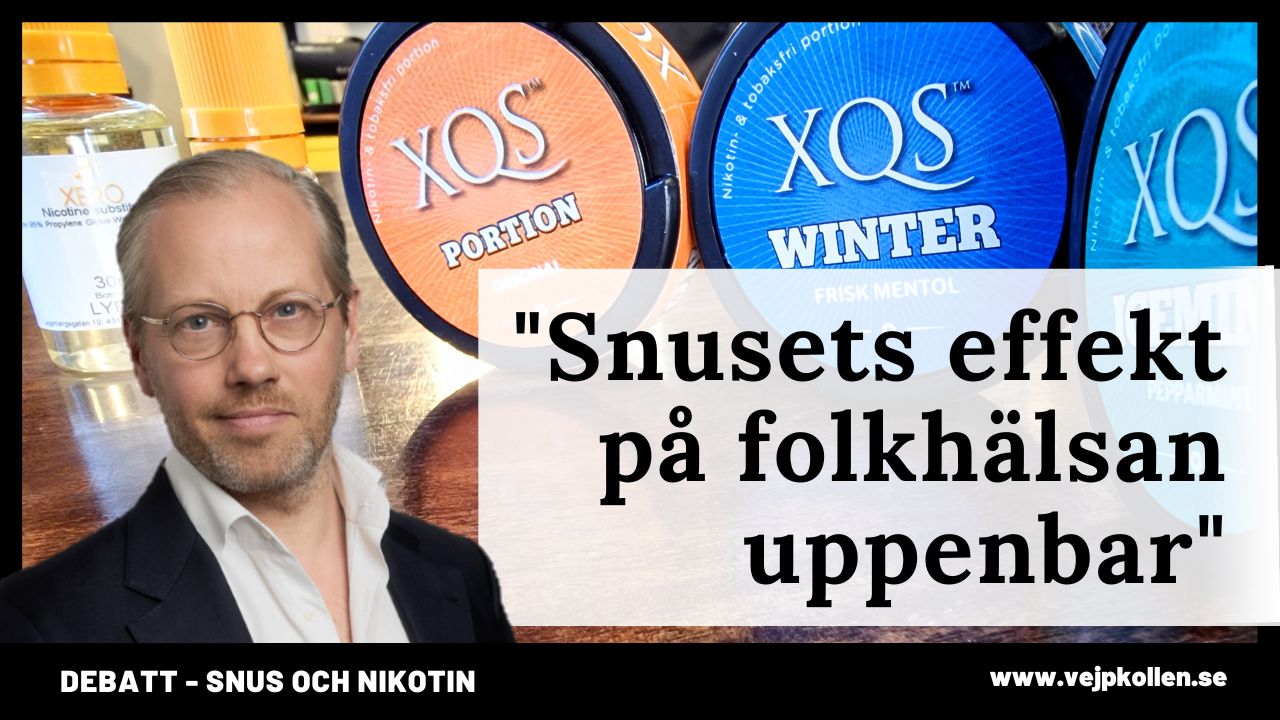Smoking has very serious negative health consequences and shortens life by up to a decade. A smoker who quits before their 30th birthday reduces their risk of dying prematurely by 97%. Every person who quits smoking, or does not start smoking, therefore has a major positive public health impact.
This is a debating article. The opinions are those of the named writer. Comment or contact editors if you want to reply!
DEBATE. There is a broad consensus in the EU that smoking should be tackled with higher cigarette taxes and tougher regulations. As a result, the price of cigarettes in the EU has increased by 45% on average since 2010. And regulations on issues such as marketing and health warnings have been harmonized and are now mandatory across the EU.
The pace of change has been so rapid that Sweden has fallen behind several 'best-in-class' countries. But despite the fact that many countries have long had both stricter regulations and higher cigarette prices than Sweden, only 6% of Swedish men smoke, compared with 19% in Ireland, 29% in France and 14% in Finland. The impact of low smoking rates on Swedish public health is clear. In the EU, the mortality rate is more than twice as high.
How can you explain that both stricter rules and higher prices lead to more smokers and poorer public health?
Swedes opt out of cigarettes
In new report from Lakeville shows that oral nicotine, such as snus and nicotine pouches, is important in helping smokers quit. The big difference between Sweden and the EU is that the sale of snus is only allowed in Sweden. This means that Swedish men have long been able to opt out of smoking in favor of a less harmful alternative nicotine product. Something that has been denied to European men for a long time.
However, over the past decade, a large number of alternative nicotine products have been launched. E-cigarettes and nicotine pouches - popularly known as 'white snus' - are two examples of nicotine products that have rapidly gained market share in Europe. Neither product is harmless to health. Both are addictive due to their nicotine content, but compared to smoking, the negative health effects are very limited. It is often quoted that the health damage from alternative nicotine products is less than 5% of that from smoking.
Market shares are changing - not the mill
However, there has been criticism that marketing and flavoring attract entirely new consumer groups to the product category. This risks threatening the effect that the products can have on public health.
Critics often assume that more marketing leads to more sales. It is not quite that simple. What is happening is a redistribution of market share between different nicotine alternatives, predominantly from smoking to safer nicotine alternatives. The same trend can be seen in alcohol, where the effect of increased marketing has been to redistribute market share, not to increase overall alcohol consumption.
Want to change the taste of tobacco
Thus, the sum of the vices appears to be fairly constant. The increase in snus use in Norway over the last two decades has been accompanied by a significant decrease in smoking, across all age groups. Since 2005, the proportion of smokers has decreased by 17 percentage points, while the proportion of snus users increased by 10 percentage points. The proportion of male snus users in Sweden is around 20%, and about 6% of men smoke. The EU average is 28%.
We know that smokers prefer to break with the taste of tobacco through flavored nicotine pouches. Although there is some new recruitment to nicotine pouches, the vast majority of users come from the group of former smokers or nicotine users. New recruitment is therefore not mainly driven by flavoring.
Risks exist - but are low
Overall, this is about how we continue to deal with people using nicotine products that do not take their lives or the lives of others. Nicotine products are not harmless, but the likelihood - the risk - of a harm resulting from the hazard must be taken into account. Compared to many other things in society, the risk of harm is extremely low. Therefore, we cannot justify strict regulation based on the addictive properties of the substance when it is proven to save lives.
Today we can say that around one in four Swedes uses nicotine daily. This has been the case for a very long time. What is changing is that fewer people are dying while users are becoming more satisfied with their use.




